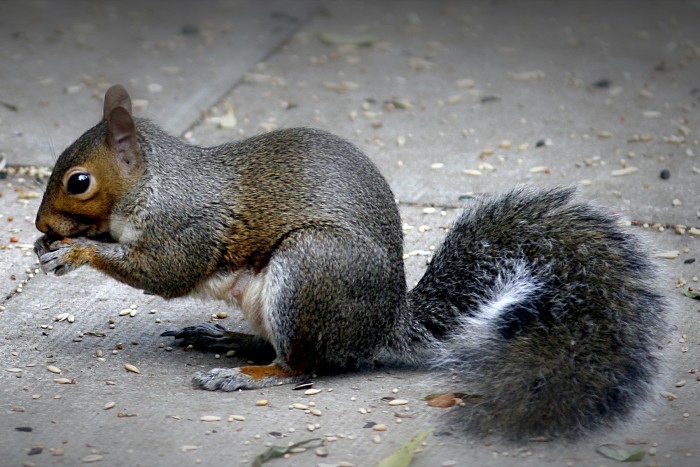This month we look at the a question which is often asked by airgunners. Understanding the rules, regulations and laws around pest control is an important part of being a responsible air rifle or air pistol shooter. Read on to find out more….
What animals are considered to be pests? What species can you shoot?
In some cases, the law is plain; in others, it’s a bit hazy. The UK’s strict gun laws, together with animal welfare legislation, have a tight rein over an individual’s right to shoot a non-domestic animal. And the definition of a ‘pest’ is not subjective.
Here are a few examples of some common UK wild animals that you might want to go to battle with.
Pigeons

The national population of woodpigeons has doubled over the last 25 years and has become a serious pest to the UK farming industry. The woodpigeon is prolific throughout Europe, but the UK population is unique in that it’s mostly non-migratory. This means, of course, that the birds never go away, and crop damage occurs throughout the year.
The growth of the woodpigeon population is directly related to the increase in oilseed rape farming. Traditionally grown purely as animal feed, oilseed rape has become a lucrative crop; and as the woodpigeon’s preferred food, the two species have flourished side-by-side. The herbivorous woodpigeon, however, is not fussy, and the annual cost of general crop damage runs into millions of pounds.
In towns and cities, feral pigeons congregate on roofs and ledges, their faeces dropping onto the ground. Due to the bacteria and ectoparasites present in pigeon droppings, they are considered to be a health hazard. As for the nuisance aspect, the build-up of debris from roosting pigeons can cause blockage of drainpipes and gutters, to the cost of freeholders and tenants.
It stands to reason that urban-dwelling pigeons cannot be shot, and there are several alternative systems in place (none of them particularly effective) to control the population. The shooting of woodpigeon in rural areas is controlled by general licences issued by government agencies, authorising the shooting of animals for specific purposes, such as the prevention of serious damage to crops and the preservation of public health.
Although you do not need to apply for general licences, you are required, by law, to abide by their terms and conditions. So it’s essential to inform yourself of these rules before you attempt hunting with your air rifle (check the BASC site for further details).
Grey Squirrels

Because squirrels bury nuts, but do not remember where they buried them, they are very useful to tree populations due to the carefully dispersed seeds. But this doesn’t cut much ice in the popularity stakes. The harm done to woodland by the little grey squirrel far outstrips the benefits.
Grey squirrels are opportunist feeders, thriving on a wide variety of food, including berries, fruit, seeds, nuts, flowers, and leaf buds, fungi, insects, birds’ eggs, and fledglings. They also have a penchant for the phloem tissue (sweet, sap-filled layers) just beneath the bark of trees, which is responsible for the movement of sugars within the plant. Removal of bark and phloem tissue can cause permanent damage to the tree.
The grey squirrel is a carrier of the squirrel pox virus, an infection to which it is immune, but which is harmful to the rarer red squirrel. Carcasses showing signs of squirrel pox – scabs around the mouth, eyes, nose, feet, and genitalia – should be sent to the Animal Health and Veterinary Laboratories Agency (AHVLA) for investigation.
Free shooting of grey squirrels is generally accepted, but the Animal Welfare Act 2006 is clear: it is illegal to cause ‘unnecessary suffering’ to an animal under your care. So you must make a clean kill, and that typically means a head shot. Targeting your quarry using a scope, and using an powerful, accurate air rifle or pistol is essential. Alternatively, you can use a rimfire rifle or shotgun, if you have access to these. In 2010, the first person to be prosecuted in the UK for causing harm to a non-domestic animal was fined £1,500 for drowning a trapped squirrel.
Rabbits
Rabbits can be shot in the daytime by the occupier of the land and one other authorised person, who can be part of the household or staff, or an individual employed specifically for the control of rabbits for remuneration.
Moles
It is illegal to shoot moles.
Magpies
The magpie is a protected species. However, the law allows the killing of a magpie for the purpose of bird preservation, a concept which is vehemently supported by members of Songbird Survival, a charity that was set up to protect the declining songbird species in the UK. If you shoot a magpie, you may have to prove in a court of law that you had acted lawfully, which could be difficult, due to a lack of evidence that magpies do actually affect the conservation of other bird species.
Rats

Of the two species of rat in the UK, the most common is the brown rat (Rattus norvegicus). They carry diseases – salmonella, listeria etc – which can spread to humans; they eat the eggs of ground-nesting birds; and they destroy property. They are not popular fellows.
Rats need to gnaw constantly in order to wear down their incisor teeth, which never stop growing. They cause floods by gnawing through lead pipes, dangerous gas leaks by chewing through gas pipes, and fires as a result of stripping insulation from electrical cables. It has been estimated that 25% of electrical fires in the UK are caused by rats.
The rat is included in the legal airgun quarry, so it is legal for a person authorised by the landowner or tenant to shoot rats with an air rifle or air pistol. The famous Crosman Rat Catcher is an example of an effective weapon to use in these situations.
When shooting in a confined area, take care not to allow pellets to stray beyond your boundary. Use food to coax your quarry to a spot in front of a backstop such as a brick wall or a carefully positioned concrete slab.
If you have a pest problem, then check out our range of pest control air rifle kits, here.
To learn more about pest control and the codes of practices around it, you can visit the BASC website.
